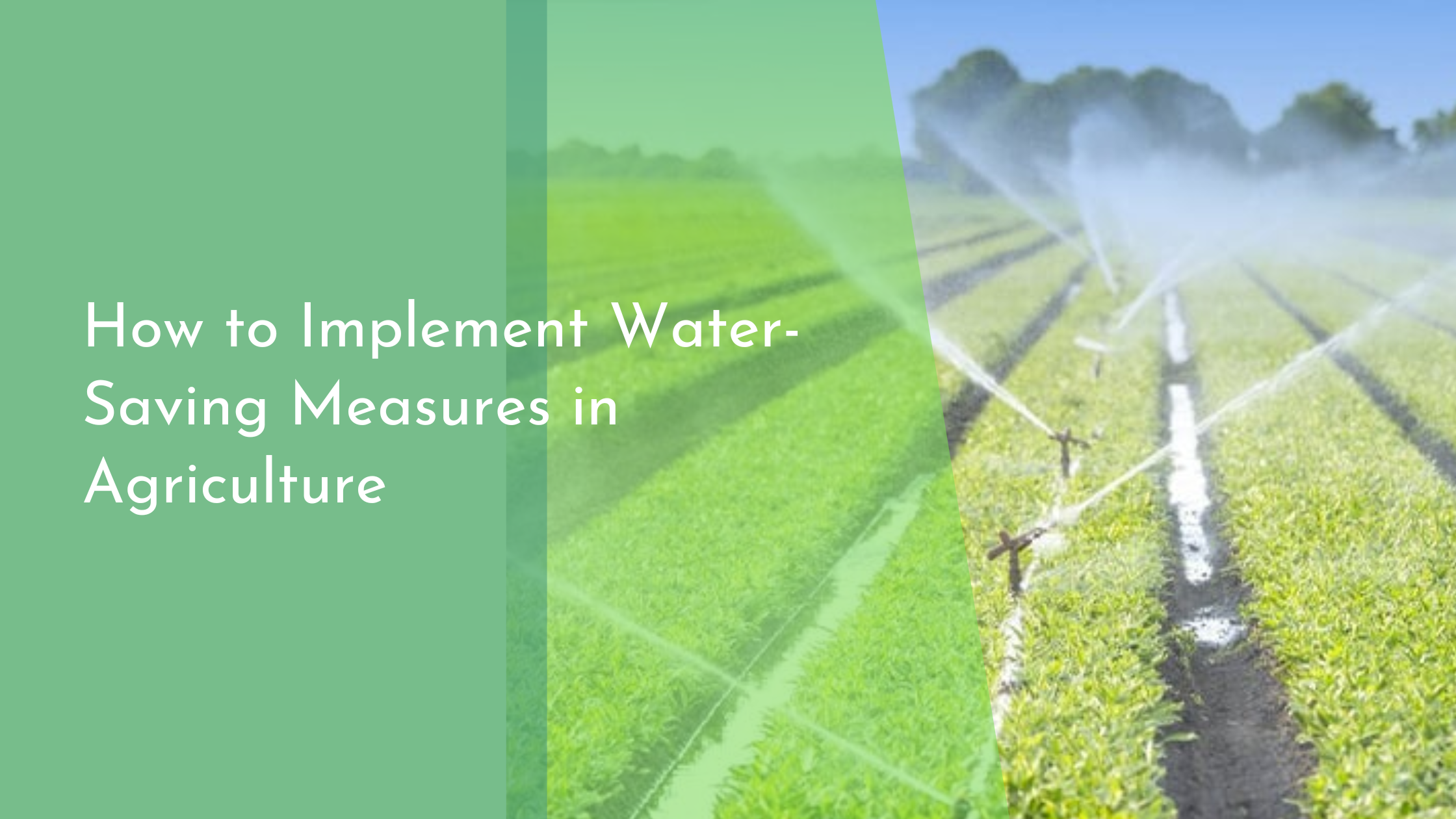How to Implement Water-Saving Measures in Agriculture
Water is an essential resource for agriculture, playing a pivotal role in crop growth and food production. However, with increasing demand and changing climate conditions, conserving water in agriculture has become more important than ever. By implementing effective water-saving measures, farmers can not only ensure the sustainability of their operations but also contribute to global efforts in conserving this precious resource. This article explores various strategies for water conservation in agriculture, offering practical insights for farmers looking to optimize their water usage.
Understanding the Importance of Water Conservation
Water conservation in agriculture is critical for maintaining food security and environmental balance. As the global population continues to grow, the demand for food and, consequently, water is expected to rise significantly. Agriculture is already the largest consumer of freshwater resources, accounting for about 70% of global freshwater use. By understanding the importance of water conservation, farmers can take proactive steps to reduce their water usage, thereby minimizing their environmental impact and preserving water for future generations.
Moreover, conserving water in agriculture helps mitigate the effects of climate change. As weather patterns become increasingly unpredictable, conserving water becomes crucial to ensure the resilience of agricultural systems. Droughts and water shortages can severely impact crop yields, leading to food shortages and economic losses. By implementing water-saving measures, farmers can build more resilient agricultural systems, better equipped to withstand the challenges posed by a changing climate.
Selecting Efficient Irrigation Systems for Your Farm
Choosing the right irrigation system is a fundamental step in conserving water on the farm. Efficient irrigation systems, such as drip and sprinkler irrigation, can significantly reduce water wastage by delivering water directly to the plant roots. Drip irrigation, for instance, uses a network of tubing and emitters to provide precise amounts of water to plants, minimizing evaporation and runoff. This system is particularly effective for farms with uneven terrain or crops with varying water requirements, as it allows for customized water delivery.
Sprinkler irrigation, on the other hand, simulates natural rainfall by spraying water over the crops. This system is suitable for a wide range of crops and can be adjusted to deliver water uniformly, reducing water wastage. When selecting an irrigation system, farmers should consider factors such as soil type, crop variety, and local climate conditions to ensure optimal water use and maximize efficiency. By investing in efficient irrigation systems, farmers can significantly reduce their water consumption and improve their overall productivity.
Innovative Techniques to Minimize Water Usage
In addition to selecting efficient irrigation systems, farmers can adopt innovative techniques to further minimize water usage. One such technique is rainwater harvesting, which involves collecting and storing rainwater for agricultural use. By capturing rainwater from rooftops or fields, farmers can supplement their water supply, reducing their dependence on external sources. This not only conserves water but also helps manage stormwater runoff, preventing soil erosion and nutrient loss.
Another innovative approach is the use of soil moisture sensors and smart irrigation controllers. These technologies allow farmers to monitor soil moisture levels in real-time and adjust their irrigation schedules accordingly. By providing water only when and where it is needed, farmers can prevent over-irrigation and reduce water wastage. These smart technologies are increasingly accessible and can be integrated with existing irrigation systems, offering a cost-effective solution for water conservation in agriculture.
Monitoring and Adapting to Water-Saving Practices
Implementing water-saving measures is not a one-time effort but requires continuous monitoring and adaptation. Farmers should regularly assess the effectiveness of their water conservation strategies, making necessary adjustments to improve efficiency. For instance, by keeping track of water usage patterns and crop performance, farmers can identify areas where water is being wasted and take corrective actions. Regular soil and plant health monitoring can also help determine the optimal irrigation schedules, ensuring that crops receive the right amount of water at the right time.
Adapting to water-saving practices also involves staying informed about new technologies and methods. By participating in workshops, training sessions, and agricultural forums, farmers can learn about the latest advancements in water conservation and incorporate them into their practices. Engaging with local agricultural extension services and collaborating with fellow farmers can provide valuable insights and support in implementing effective water-saving strategies. By fostering a culture of continuous learning and adaptation, farmers can ensure the long-term sustainability of their water conservation efforts.
Water conservation in agriculture is not only essential for the sustainability of farming operations but also for the well-being of our planet. By understanding the importance of conserving water, selecting efficient irrigation systems, adopting innovative techniques, and continuously monitoring their practices, farmers can significantly reduce their water usage and contribute to a more sustainable future. As the challenges of climate change and increasing water demand continue to grow, implementing water-saving measures in agriculture is more critical than ever. Through collective efforts and a commitment to sustainable practices, we can ensure that water, our most precious resource, is preserved for generations to come.

